Aerófonos

Estos instrumentos son los que producen el sonido debido a la vibración de una columna de aire.
Según el origen de esta vibración, los aerófonos pueden ser de boquilla, de bisel, sin lengüeta,
de lengüeta simple, de lengüeta doble y de vibración.
Haz click en cada imagen para verla en tamaño completo.
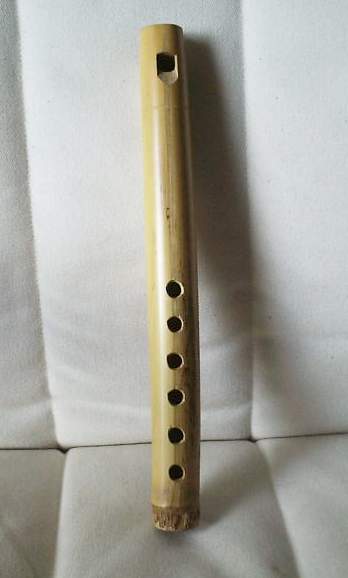
Pito de caña
Es un aerófono de bisel. Era muy usada por pastores, niños y dulzaineros, los cuales la utilizaban para ensayar en casa debido a su sonido de baja potencia. Las formas y tamaños son muy variables, dependiendo del constructor, siendo un instrumento de pasatiempo más que otra cosa. Podían tener entre 4 y 8 agujeros. Se encuentra en toda la península.
Es un aerófono de bisel. Era muy usada por pastores, niños y dulzaineros, los cuales la utilizaban para ensayar en casa debido a su sonido de baja potencia. Las formas y tamaños son muy variables, dependiendo del constructor, siendo un instrumento de pasatiempo más que otra cosa. Podían tener entre 4 y 8 agujeros. Se encuentra en toda la península.
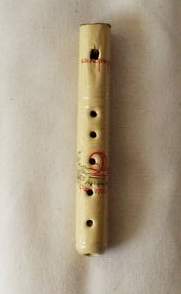
Pito de caja de puro
Otro aerófono de bisel. Es una variedad del anterior, hecho con la funda de un puro y un corcho. Copia de uno recogido por el investigador Luis Angel Payno en Soria. Nos demuestra la riqueza de la Cultura Tradicional y la adaptabilidad de materiales.
Otro aerófono de bisel. Es una variedad del anterior, hecho con la funda de un puro y un corcho. Copia de uno recogido por el investigador Luis Angel Payno en Soria. Nos demuestra la riqueza de la Cultura Tradicional y la adaptabilidad de materiales.
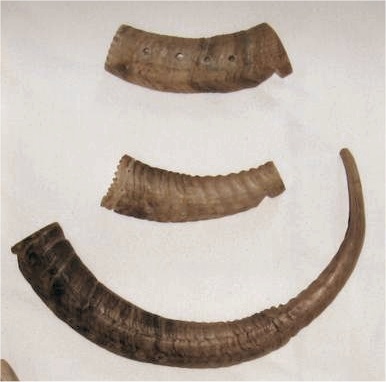
Pito de cuerno de cabra
Aerófono de bisel, construido con un cuerno de cabra. Usado por pastores. Número de agujeros entre 3 y 6. No tiene afinación fija.
Aerófono de bisel, construido con un cuerno de cabra. Usado por pastores. Número de agujeros entre 3 y 6. No tiene afinación fija.
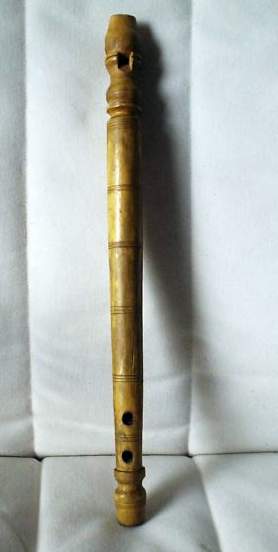
Flautas de tres agujeros
Aerófonos de bisel. Su escala tonal completa se consigue sobresoplando la embocadura, llegando a más de dos octavas. Se tocan inseparablemente con el tamboril, uno en cada mano o con el salterio. Ejemplares: txirula, txistu, chiflo aragonés, flauta de Ibiza y de Tras Os Montes.
Aerófonos de bisel. Su escala tonal completa se consigue sobresoplando la embocadura, llegando a más de dos octavas. Se tocan inseparablemente con el tamboril, uno en cada mano o con el salterio. Ejemplares: txirula, txistu, chiflo aragonés, flauta de Ibiza y de Tras Os Montes.
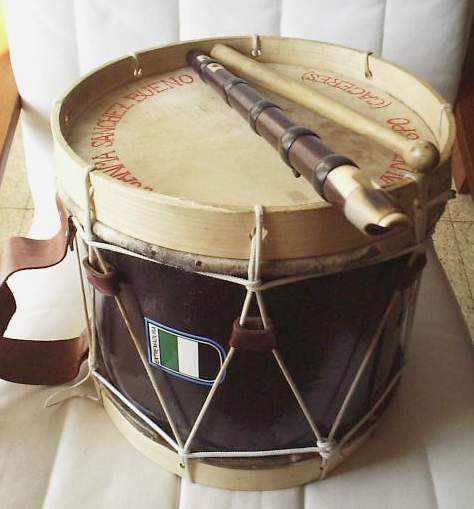
Gaita y tamboril
Gaita charra y tamboril de Salamanca y alrededores. La gaita charra procede de Salamanca y se fabrica con madera de encina, asta de toro o vaca para los anillos y hueso para el bisel. Usada también en Cáceres.
Gaita charra y tamboril de Salamanca y alrededores. La gaita charra procede de Salamanca y se fabrica con madera de encina, asta de toro o vaca para los anillos y hueso para el bisel. Usada también en Cáceres.

Flabiol
Aerófono de bisel cilíndrico de 20-25 cm. Con 8 agujeros (5 delanteros y 3 traseros), fabricado de madera o caña. Puede tener llaves y se toca con un solo músico, acompañando sardanas y otros bailes. Muy usado en Cataluña y Baleares.
Aerófono de bisel cilíndrico de 20-25 cm. Con 8 agujeros (5 delanteros y 3 traseros), fabricado de madera o caña. Puede tener llaves y se toca con un solo músico, acompañando sardanas y otros bailes. Muy usado en Cataluña y Baleares.

Dulzaina
Aerófono de lengüeta doble. Tubo sonoro troncocónico de madera, con tudel metálico. Varias regiones de España tienen su propia dulzaina: castellana, extremeña, valenciana, navarra, aragonesa, y grallas catalanas. También hay tarotas, instrumento similar más grave.
Aerófono de lengüeta doble. Tubo sonoro troncocónico de madera, con tudel metálico. Varias regiones de España tienen su propia dulzaina: castellana, extremeña, valenciana, navarra, aragonesa, y grallas catalanas. También hay tarotas, instrumento similar más grave.
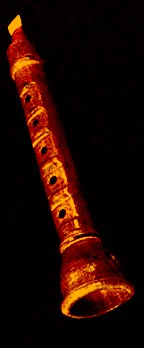
Palheta
Aerófono tradicional portugués, de la familia de las dulzainas.
Aerófono tradicional portugués, de la familia de las dulzainas.
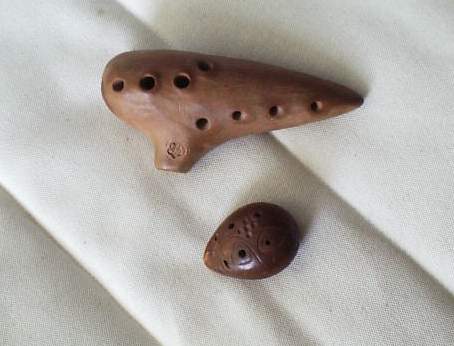
Ocarina / Asubio
Aerófono de bisel. Recipiente de barro en forma de globo cuya invención data de finales del siglo XIX por Giuseppe Donatti. La ocarina suele tener 9 o 10 agujeros. En Galicia tuvo gran arraigo, donde surgió una variante local llamada asubio de Paparolo, de menor tamaño y sonido más agudo.
Aerófono de bisel. Recipiente de barro en forma de globo cuya invención data de finales del siglo XIX por Giuseppe Donatti. La ocarina suele tener 9 o 10 agujeros. En Galicia tuvo gran arraigo, donde surgió una variante local llamada asubio de Paparolo, de menor tamaño y sonido más agudo.

Pito de llaves
Aerófono de bisel similar a las flautas de pico, normalmente afinado en Do y con ocho agujeros. Durante el siglo XIX se importaron modelos a los que se añadieron llaves. Se utilizó para bailes de salón, estudiantinas y como sustituto doméstico de la dulzaina.
Aerófono de bisel similar a las flautas de pico, normalmente afinado en Do y con ocho agujeros. Durante el siglo XIX se importaron modelos a los que se añadieron llaves. Se utilizó para bailes de salón, estudiantinas y como sustituto doméstico de la dulzaina.
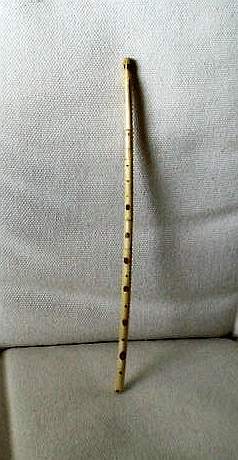
Pito de centeno
Aerófono de lengüeta simple fabricado con un tallo seco de centeno. Instrumento de pasatiempo pastoril o juguete infantil, común en zonas cerealistas, especialmente Castilla y León.
Aerófono de lengüeta simple fabricado con un tallo seco de centeno. Instrumento de pasatiempo pastoril o juguete infantil, común en zonas cerealistas, especialmente Castilla y León.
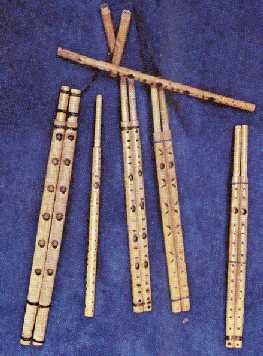
Xeremeieta (reclam de xeremies)
Aerófono de lengüeta simple formado por uno o dos tubos de caña unidos. Posee entre 4 y 6 agujeros delanteros y uno trasero. Se tocaba con la técnica de soplo continuo. Muy extendido en Baleares y el Mediterráneo.
Aerófono de lengüeta simple formado por uno o dos tubos de caña unidos. Posee entre 4 y 6 agujeros delanteros y uno trasero. Se tocaba con la técnica de soplo continuo. Muy extendido en Baleares y el Mediterráneo.
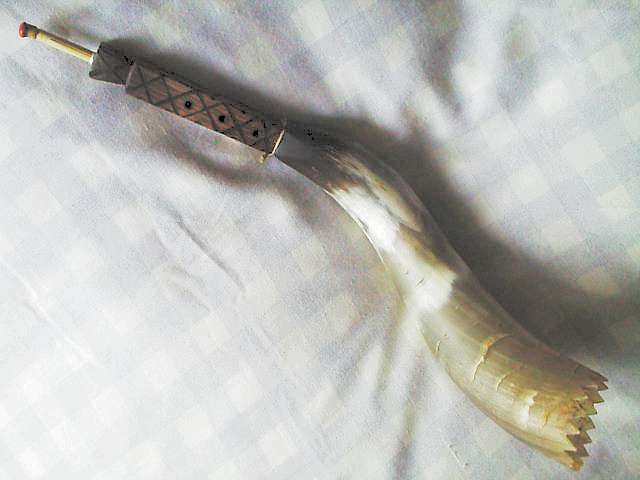
Gaita de El Gastor (Cádiz)
Aerófono de lengüeta simple con tubo de madera y pabellón de cuerno. Tradicional del pueblo de El Gastor, donde se toca en celebraciones como Todos los Santos y Navidad. Guarda paralelismos con la gaita serrana madrileña.
Aerófono de lengüeta simple con tubo de madera y pabellón de cuerno. Tradicional del pueblo de El Gastor, donde se toca en celebraciones como Todos los Santos y Navidad. Guarda paralelismos con la gaita serrana madrileña.
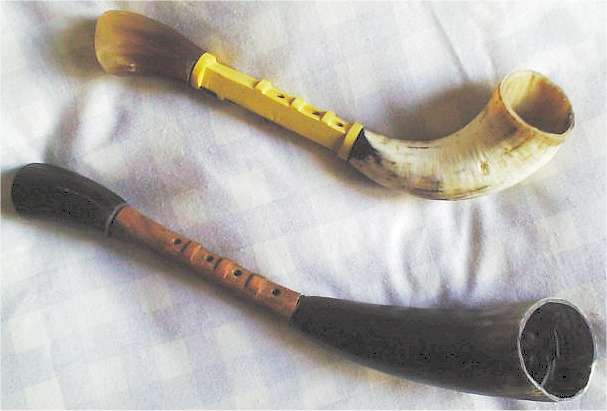
Gaita serrana de Madrid
Aerófono de lengüeta simple con embocadura y pabellón de cuerno. Instrumento pastoril casi extinguido, recuperado por Manuel García Matos en la sierra norte de Madrid.
Aerófono de lengüeta simple con embocadura y pabellón de cuerno. Instrumento pastoril casi extinguido, recuperado por Manuel García Matos en la sierra norte de Madrid.
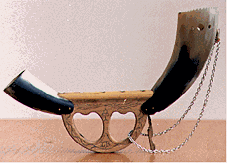
Alboka
Aerófono de dos lengüetas simples con tubos de caña y pabellones de cuerno. Produce sonido continuo mediante la técnica de soplo continuo. Instrumento tradicional del País Vasco.
Aerófono de dos lengüetas simples con tubos de caña y pabellones de cuerno. Produce sonido continuo mediante la técnica de soplo continuo. Instrumento tradicional del País Vasco.
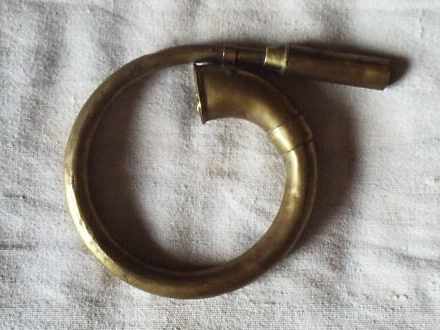
Turuta de pregonero
Aerófono de lengüeta simple utilizado para llamar la atención durante los pregones. De metal, pequeño y troncocónico, emitía una nota fija no modulable.
Aerófono de lengüeta simple utilizado para llamar la atención durante los pregones. De metal, pequeño y troncocónico, emitía una nota fija no modulable.
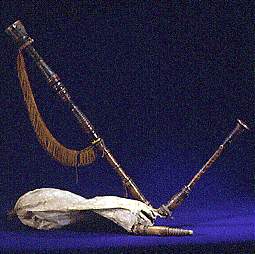
Gaita de fole
Gaita de odre con puntero de lengüeta doble y bordón de lengüeta simple. Tradicional de Zamora, León y Tras-os-Montes. Produce sonido continuo gracias al fol.
Gaita de odre con puntero de lengüeta doble y bordón de lengüeta simple. Tradicional de Zamora, León y Tras-os-Montes. Produce sonido continuo gracias al fol.
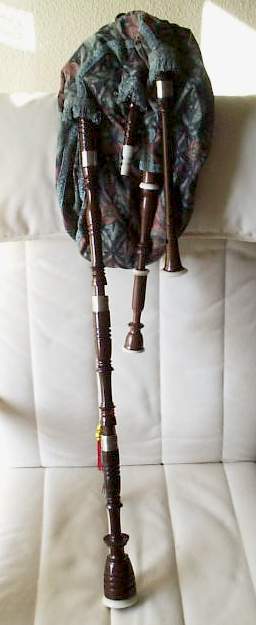
Gaita gallega
Gaita de odre muy evolucionada, afinada en varios tonos. Incluye punteiro, roncón y otros bordones. Es la gaita más extendida de la península.
Gaita de odre muy evolucionada, afinada en varios tonos. Incluye punteiro, roncón y otros bordones. Es la gaita más extendida de la península.
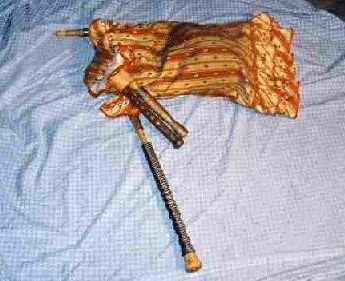
Gaita de boto aragonesa
Gaita de odre exclusiva de Aragón, con puntero y dos bordones. Estuvo a punto de desaparecer en los años 70, pero fue recuperada mediante investigación etnográfica.
Gaita de odre exclusiva de Aragón, con puntero y dos bordones. Estuvo a punto de desaparecer en los años 70, pero fue recuperada mediante investigación etnográfica.
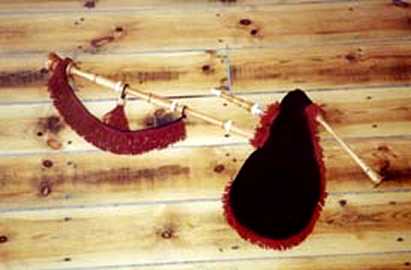
Gaita asturiana
Gaita de odre con punteru, roncón y soplete. Se diferencia de la gallega por su digitación cerrada y timbre más seco. Propia de Asturias y occidente de Cantabria.
Gaita de odre con punteru, roncón y soplete. Se diferencia de la gallega por su digitación cerrada y timbre más seco. Propia de Asturias y occidente de Cantabria.
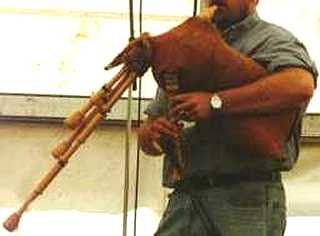
Sac de gemecs
Gaita tradicional catalana con tubos pedales frontales. El último intérprete murió en 1963, y desde los años 80 se investiga su técnica original.
Gaita tradicional catalana con tubos pedales frontales. El último intérprete murió en 1963, y desde los años 80 se investiga su técnica original.
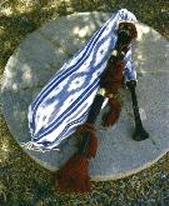
Xeremies mallorquina
Gaita de odre de Mallorca, similar al sac de gemecs pero con bordones ciegos. Se toca junto al fubiol y tamboril formando el dúo de xeremiers.
Gaita de odre de Mallorca, similar al sac de gemecs pero con bordones ciegos. Se toca junto al fubiol y tamboril formando el dúo de xeremiers.
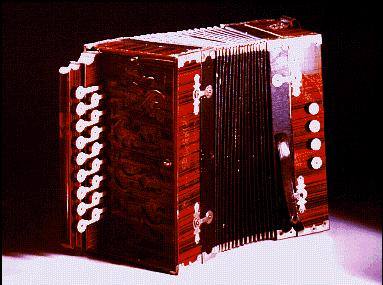
Acordeón diatónico / Concertina
Aerófono de lengüeta simple libre accionado por fuelle. Produce notas distintas al abrir o cerrar el fuelle. Muy popular en fiestas y bailes tradicionales.
Aerófono de lengüeta simple libre accionado por fuelle. Produce notas distintas al abrir o cerrar el fuelle. Muy popular en fiestas y bailes tradicionales.
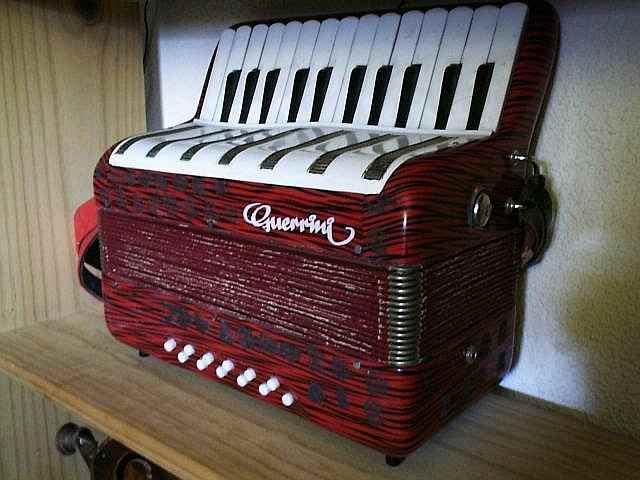
Acordeón cromático
Aerófono de lengüeta simple con teclado cromático. Más sencillo de tocar que el diatónico y muy extendido en España y Portugal.
Aerófono de lengüeta simple con teclado cromático. Más sencillo de tocar que el diatónico y muy extendido en España y Portugal.

Pífano
Aerófono sin lengüeta. Tubo cilíndrico tocado transversalmente, con siete agujeros y embocadura directa. El intérprete dirige el soplo oblicuamente sobre el borde del orificio. Se cree que llegó a la península a través de soldados suizos en el siglo XV, aunque ya existían flautas traveseras árabes como la ajabeba.
Aerófono sin lengüeta. Tubo cilíndrico tocado transversalmente, con siete agujeros y embocadura directa. El intérprete dirige el soplo oblicuamente sobre el borde del orificio. Se cree que llegó a la península a través de soldados suizos en el siglo XV, aunque ya existían flautas traveseras árabes como la ajabeba.
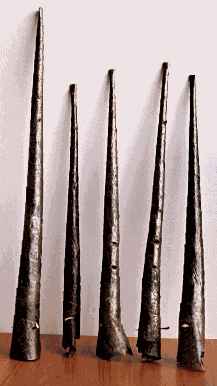
Trompa de corteza
Aerófono de lengüeta doble construido enrollando corteza de avellano, fresno u otros árboles. Instrumento estacional, fabricado habitualmente en primavera. Posee una lengüeta doble formada al aplastar el vértice y puede tener algunos agujeros para obtener una escala muy básica. En el País Vasco se conoce como “supriñu”.
Aerófono de lengüeta doble construido enrollando corteza de avellano, fresno u otros árboles. Instrumento estacional, fabricado habitualmente en primavera. Posee una lengüeta doble formada al aplastar el vértice y puede tener algunos agujeros para obtener una escala muy básica. En el País Vasco se conoce como “supriñu”.
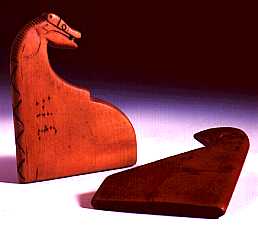
Castrapuercas
Aerófono sin lengüeta de tubo vertical, construido con una tabla de madera trapezoidal perforada. El soplo incide oblicuamente sobre los orificios produciendo la vibración de la columna de aire. Tradicionalmente utilizado por capadores de cerdos, afiladores y componedores de paraguas para anunciar su llegada.
Aerófono sin lengüeta de tubo vertical, construido con una tabla de madera trapezoidal perforada. El soplo incide oblicuamente sobre los orificios produciendo la vibración de la columna de aire. Tradicionalmente utilizado por capadores de cerdos, afiladores y componedores de paraguas para anunciar su llegada.
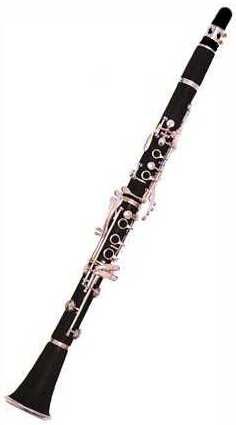
Clarinete
Aerófono de lengüeta simple con tubo cilíndrico de madera y sistema de llaves. Instrumento de origen culto que fue adoptado por músicos tradicionales, llegando en algunas regiones como Cantabria y Asturias a desplazar a la dulzaina y al pito de tres agujeros.
Aerófono de lengüeta simple con tubo cilíndrico de madera y sistema de llaves. Instrumento de origen culto que fue adoptado por músicos tradicionales, llegando en algunas regiones como Cantabria y Asturias a desplazar a la dulzaina y al pito de tres agujeros.

Saxofón
Aerófono de lengüeta simple inventado por Adolphe Sax en 1846. Combina boquilla de clarinete con llaves similares a las del oboe en un tubo metálico cónico. Aunque ideado para bandas militares, se integró en la música popular a través de las charangas.
Aerófono de lengüeta simple inventado por Adolphe Sax en 1846. Combina boquilla de clarinete con llaves similares a las del oboe en un tubo metálico cónico. Aunque ideado para bandas militares, se integró en la música popular a través de las charangas.

Corneta y trompeta
Aerófonos de boquilla en los que la vibración de los labios produce el sonido. Instrumentos metálicos con campana amplificadora. La corneta tiene una escala limitada, mientras que la trompeta de pistones permite mayor extensión tonal. Muy presentes en bandas, procesiones y charangas.
Aerófonos de boquilla en los que la vibración de los labios produce el sonido. Instrumentos metálicos con campana amplificadora. La corneta tiene una escala limitada, mientras que la trompeta de pistones permite mayor extensión tonal. Muy presentes en bandas, procesiones y charangas.